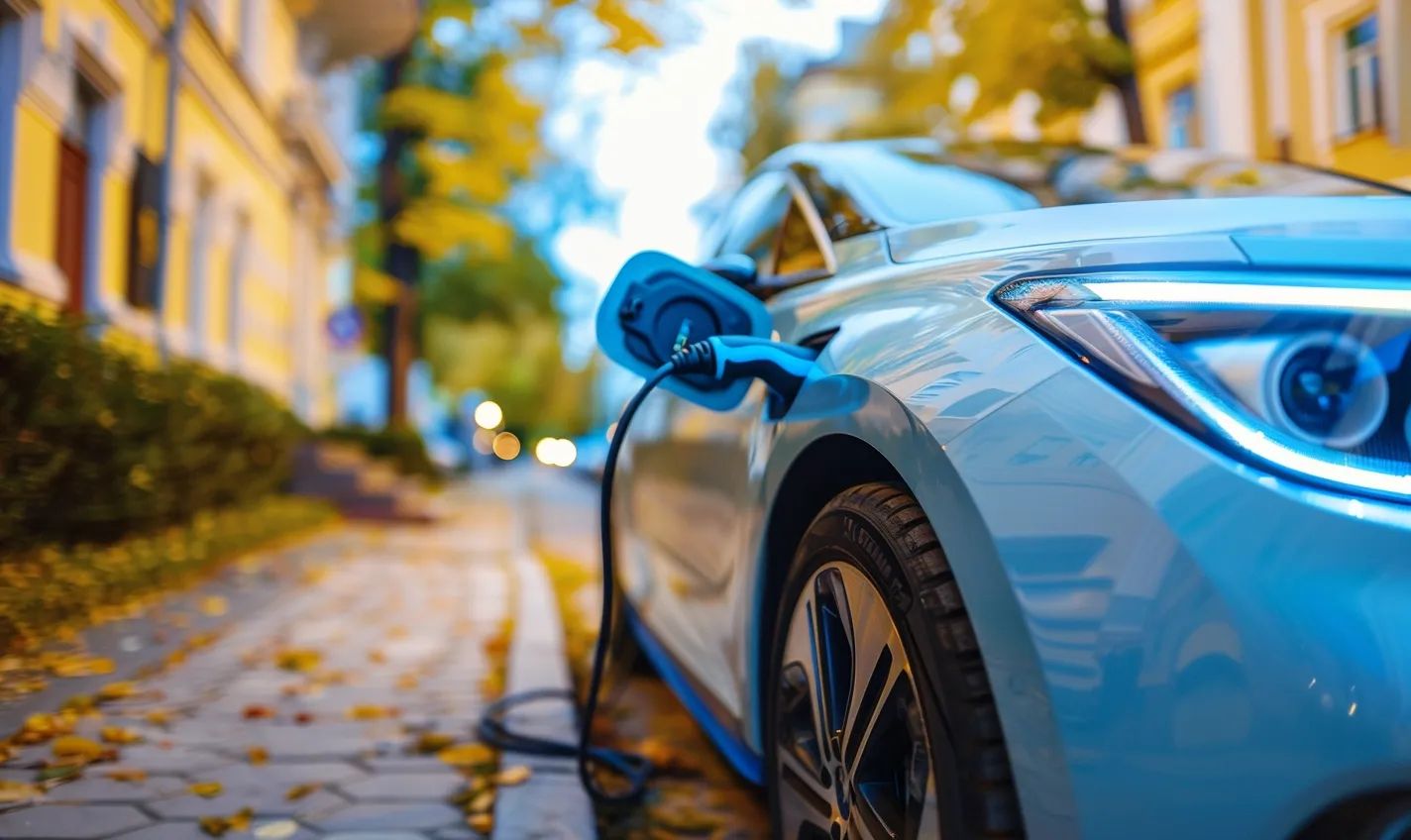Driving an electric car is an incredible experience, with its smooth acceleration and reduced carbon emissions. But one of the most fascinating features of these vehicles is regenerative braking. This innovative technology lets the car capture and store energy typically lost during braking, making it more efficient and eco-friendly.
Regenerative braking works by converting the kinetic energy of the moving car into electrical energy, which is then stored in the car’s battery for later use. By harnessing this energy, electric vehicles can extend their driving range and reduce the need for frequent charging. It’s like giving your car a second life every time you brake!
So, how can you make the most of regenerative braking? Firstly, it’s essential to understand when and how to use it effectively. When you release the accelerator pedal or apply the brake, the electric motor in your car switches into generator mode, capturing the energy produced during deceleration. This allows the vehicle to slow down while simultaneously recharging the battery.
To maximize the efficiency of regenerative braking, it’s crucial to anticipate your stops and avoid harsh braking whenever possible. Planning your deceleration helps you become a smoother driver and allows you to take full advantage of this technology. By gradually easing off the accelerator and using regenerative braking, you can minimize energy loss and maximize the energy captured.
Another tip for using regenerative braking effectively is to use the different driving modes available in some electric cars. For example, some models offer “one-pedal driving” mode, which increases the amount of energy recovered during braking. In this mode, simply releasing the accelerator causes the car to slow down significantly, reducing the need for frequent braking and increasing your overall efficiency.
Mastering regenerative braking is not only beneficial for your electric car’s performance but also for the environment. By maximizing the energy captured during braking, you contribute to reducing greenhouse gas emissions and promoting sustainable transportation. So, the next time you get behind the wheel of your electric car, remember to harness the power of regenerative braking and drive with a greener mindset!
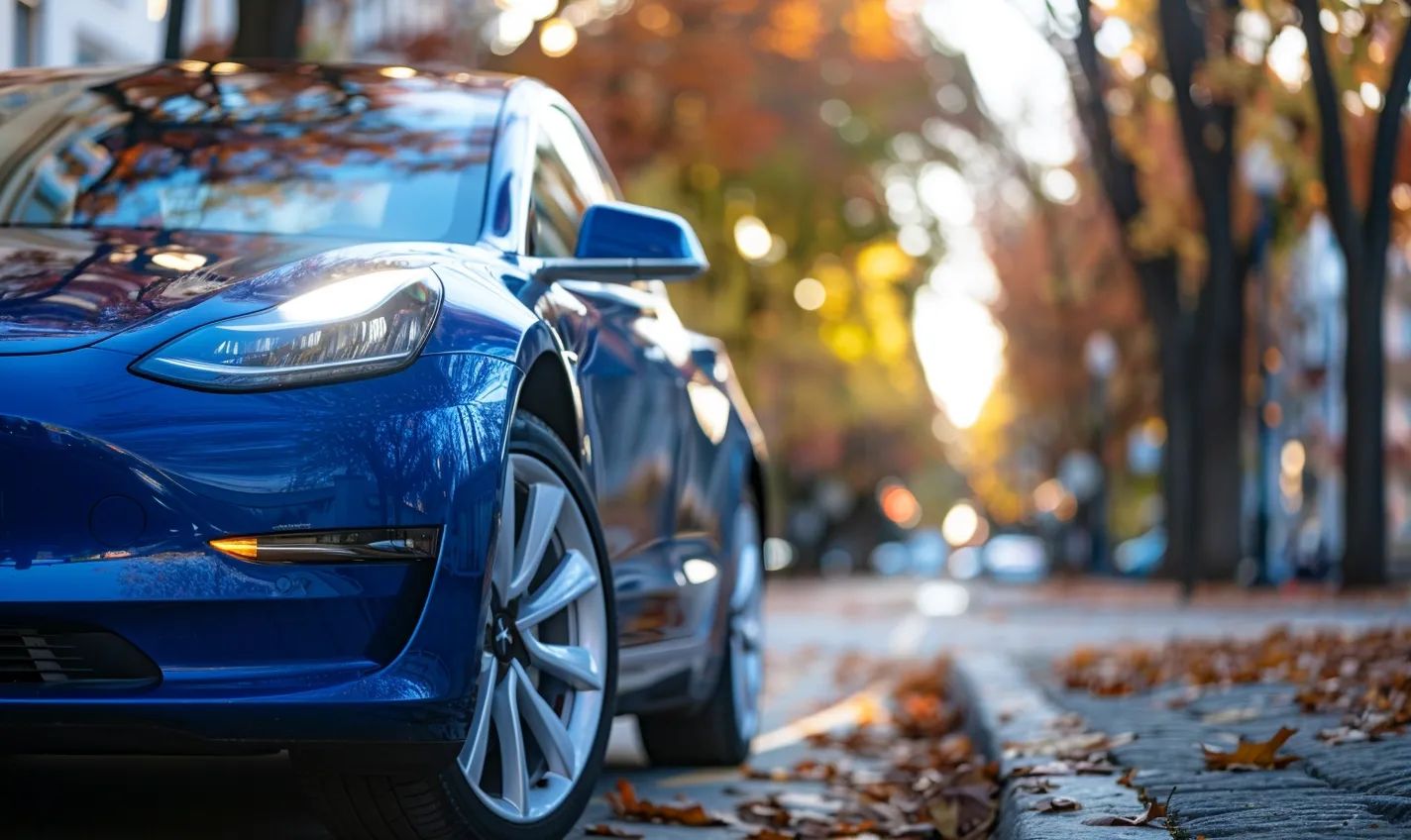
What is Regenerative Braking, and How Does It Work in Electric Cars?
When it comes to driving and operating an electric car, understanding the concept of regenerative braking is critical. Regenerative braking is a unique feature of electric vehicles that allows them to recover and store energy that would otherwise be wasted during deceleration and braking. But what exactly is regenerative braking, and how does it work?
Understanding the Basics
Traditional vehicles use friction brakes to slow down and come to a stop. This process converts kinetic energy into heat energy, which is then dissipated into the atmosphere. On the other hand, electric vehicles leverage regenerative braking to slow down and capture kinetic energy, converting it into electrical energy that can be stored and reused later.
How Does It Work?
Regenerative braking works by using the vehicle’s electric motor as a generator. When you release the accelerator pedal or apply the brakes, the motor switches into generator mode and converts the vehicle’s kinetic energy into electrical energy. This electrical energy is returned to the battery for storage, increasing the vehicle’s overall efficiency.
Here’s a simplified breakdown of the process:
- As you lift your foot off the accelerator or apply the brakes, the electric motor generates a reverse torque.
- This reverse torque slows down the vehicle, simultaneously generating electricity.
- The electricity is then fed back into the battery, charging it and increasing its available energy.
By harnessing the power of regenerative braking, electric vehicles can extend their range, reduce wear and tear on traditional braking systems, and enhance overall energy efficiency.
The Benefits of Regenerative Braking
Regenerative braking offers several advantages for electric car owners:
- Increased Efficiency: By capturing and reusing energy that would otherwise be lost, regenerative braking helps improve the overall efficiency of electric vehicles.
- Extended Range: The energy stored through regenerative braking can power the vehicle, extending its range between charges.
- Reduced Brake Wear: Since regenerative braking relies on the electric motor for deceleration, it puts less strain on the traditional brake system, reducing wear and maintenance costs.
- Sustainability: By reducing energy waste and relying less on traditional braking systems, regenerative braking plays a significant role in achieving a more sustainable future.
Overall, regenerative braking is a revolutionary feature of electric cars that helps maximize energy efficiency, increase range, and contribute to a greener transportation system.
Now that we’ve covered the basics of regenerative braking let’s dive deeper into this innovative technology’s advantages, tips, and common mistakes.

The Advantages of Regenerative Braking in Electric Cars
Regenerative braking is a critical feature in electric cars that offers several advantages over conventional braking systems. Electric vehicles (EVs) can increase efficiency, improve range, and reduce wear on mechanical components by harnessing the energy generated during braking. In this article, we will explore the benefits of regenerative braking and why it is an essential technology for the future of the automotive industry.
Enhanced Energy Efficiency
One of the primary advantages of regenerative braking is its ability to recover and store energy that would otherwise be lost as heat in conventional braking systems. This energy is redirected back into the vehicle’s battery, effectively increasing the overall efficiency of the EV. By utilizing regenerative braking, electric cars can recapture and reuse up to 70% of the energy typically lost during braking, resulting in improved fuel economy and reduced reliance on external charging sources.
Extended Range
With regenerative braking, EVs have the potential to travel greater distances on a single charge. By converting the moving vehicle’s kinetic energy back into electrical energy, regenerative braking replenishes the battery, allowing for more extended range capabilities. This enhances the convenience of owning an electric car, reduces the need for frequent recharging, and extends the vehicle’s lifespan.
Reduced Wear and Maintenance
Traditional braking systems in internal combustion engine vehicles rely on friction and mechanical components that experience wear and tear over time. In contrast, regenerative braking primarily utilizes the electric motor to slow down the car, considerably reducing the use of conventional braking components. As a result, electric vehicles equipped with regenerative braking require fewer brake pad replacements, leading to reduced maintenance costs and longer-lasting braking systems.
Smooth and Controlled Deceleration
Regenerative braking offers drivers a smoother and more controlled deceleration experience than conventional braking. The technology allows for precise control over the amount of regenerative braking force applied, enabling a seamless transition between acceleration and deceleration. This improves driving comfort and enhances electric vehicles’ safety and handling dynamics, especially in challenging road conditions.
Beyond the advantages mentioned above, regenerative braking also contributes to reducing carbon emissions, as the energy recovered during braking minimizes the need for power generated from non-renewable sources. Additionally, it promotes a quieter driving experience, as regenerative braking produces less noise compared to traditional braking systems.
As the automotive industry continually evolves towards sustainable transportation solutions, regenerative braking will play an increasingly crucial role in maximizing the efficiency and performance of electric cars. With its numerous benefits, this technology is undoubtedly reshaping how we drive and operate our vehicles, paving the way for a cleaner, greener, and more sustainable future.

Understanding the Science Behind Regenerative Braking
Understanding the science behind regenerative braking is essential for driving and operating an electric car. Regenerative braking is a unique feature in electric vehicles that allows for the recovery of kinetic energy usually lost during conventional braking. In simpler terms, it enables the car to partially recharge its battery while slowing down or coming to a stop. But how does this innovative system work?
The Science behind Regenerative Braking Explained
Regenerative braking relies on the principle of converting mechanical energy into electrical energy. Here’s how it works:
- As you press the brake pedal, the electric motor in the vehicle’s drivetrain switches to generator mode.
- The car’s wheels slow down, causing the drivetrain to rotate the electric motor.
- The kinetic energy produced by the rotation is transformed into electrical energy by the generator mode.
- This electrical energy is then returned to the battery, which is stored and ready to be used later.
By harnessing the energy that would typically be lost as heat during conventional braking, regenerative braking gives electric vehicles a significant advantage in terms of efficiency and range.
Benefits of Regenerative Braking
Regenerative braking offers several benefits, making it a crucial feature in electric cars:
- Improved energy efficiency: By capturing and reusing energy that would have been wasted, regenerative braking improves the overall energy efficiency of electric vehicles.
- Extended driving range: The regenerative braking system allows electric cars to recover some energy used while driving, thereby increasing the vehicle’s range.
- Reduced brake wear: Since regenerative braking relies on the electric motor to slow down the vehicle, it puts less strain on the traditional braking system, reducing wear and tear.
- Smooth deceleration: Regenerative braking provides a smoother and more controlled deceleration experience, enhancing driver comfort and safety.
Using regenerative braking, electric car owners can optimize their driving experience while minimizing energy consumption and maximizing efficiency.
Understanding the science behind regenerative braking is just one aspect of using this feature effectively. The following section will explore practical tips for maximizing regenerative braking efficiency and getting the most out of this innovative technology.
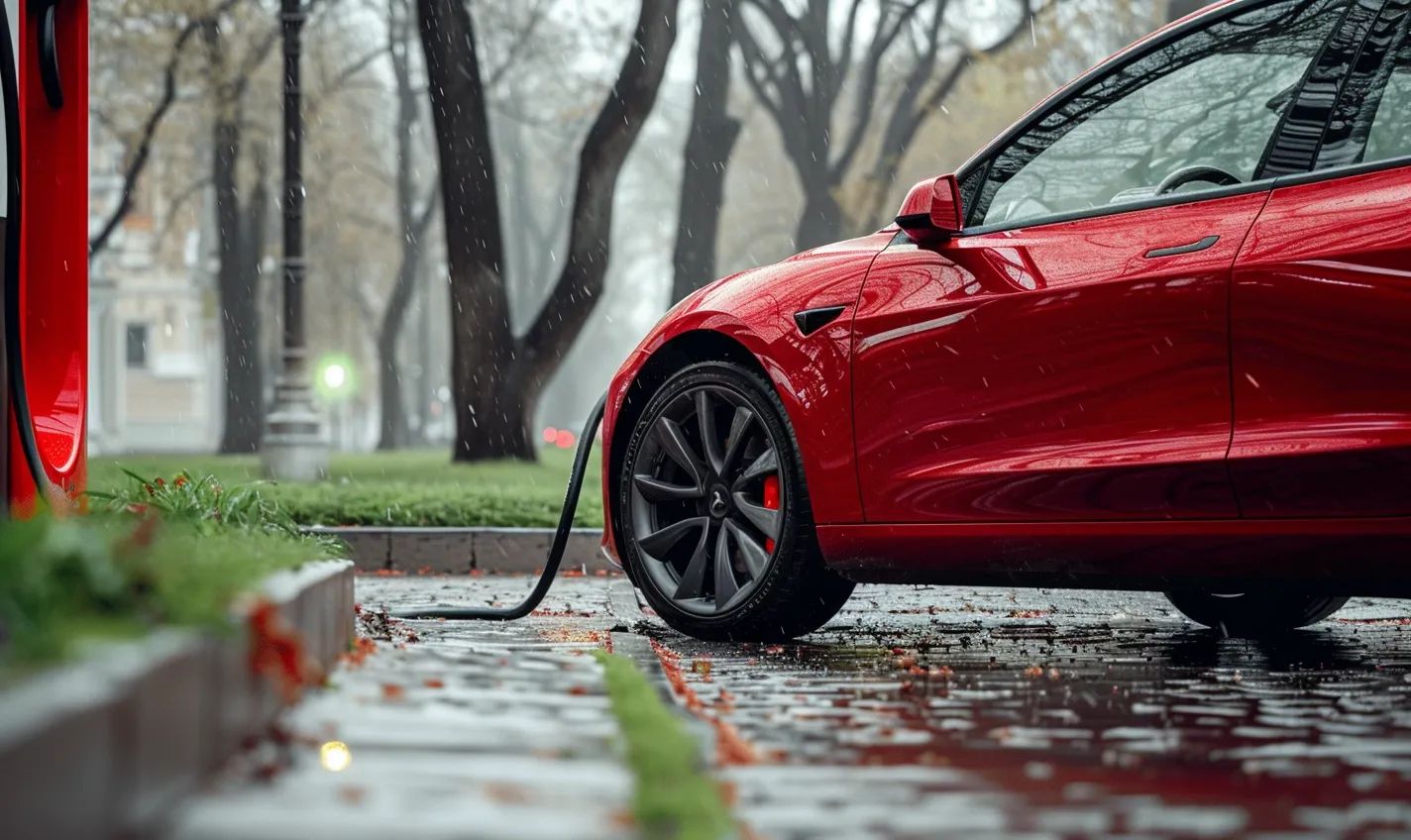
Tips for Maximizing Regenerative Braking Efficiency
Anticipate Traffic and Plan Ahead
One of the keys to effectively using regenerative braking is to anticipate traffic and plan your driving. By keeping an eye on the road and maintaining a safe distance from the vehicle in front of you, you can better anticipate when you may need to slow down or stop. This allows you to gradually release the accelerator and let the regenerative braking system do its work, converting kinetic energy into electricity.
Utilize One-Pedal Driving
Many electric cars have a “one-pedal driving” feature, which allows you to control acceleration and braking with just the accelerator pedal. By lifting your foot off the accelerator, you can engage regenerative braking and slow down the vehicle without using the brake pedal. This maximizes regenerative braking efficiency and reduces wear and tear on the brake pads.
Avoid Frequent Hard Braking
While regenerative braking effectively converts kinetic energy into electricity, excessive hard braking can reduce efficiency. Hard braking requires traditional friction brakes and leads to losing a significant amount of kinetic energy. To maximize regenerative braking efficiency, maintain a smooth and steady driving style, anticipate traffic flow, and use gradual braking when necessary.
Take Advantage of Downhill Driving
When driving downhill, gravity can work in your favor to increase regenerative braking efficiency. By taking your foot off the accelerator and using regenerative braking to slow down, you can use the vehicle’s potential energy and convert it into electricity. This can help recharge the battery and enhance overall efficiency. However, it’s essential to maintain control of the vehicle’s speed and always follow safe driving practices.
Monitor Energy Flow
Some electric cars come with a visual display showing energy flow while driving. This can be a valuable tool for monitoring how efficiently you use regenerative braking. By watching this display, you can learn to adjust your driving style and make the most of the regenerative braking system. Experiment with different driving techniques and observe how they affect the energy flow to optimize your efficiency.
By implementing these tips, you can maximize the effectiveness of regenerative braking in your electric car. Remember, regenerative braking not only helps improve efficiency but also contributes to extending the range of your electric vehicle. So, why not make the most of this innovative technology and enjoy a smoother driving experience while reducing environmental impact?
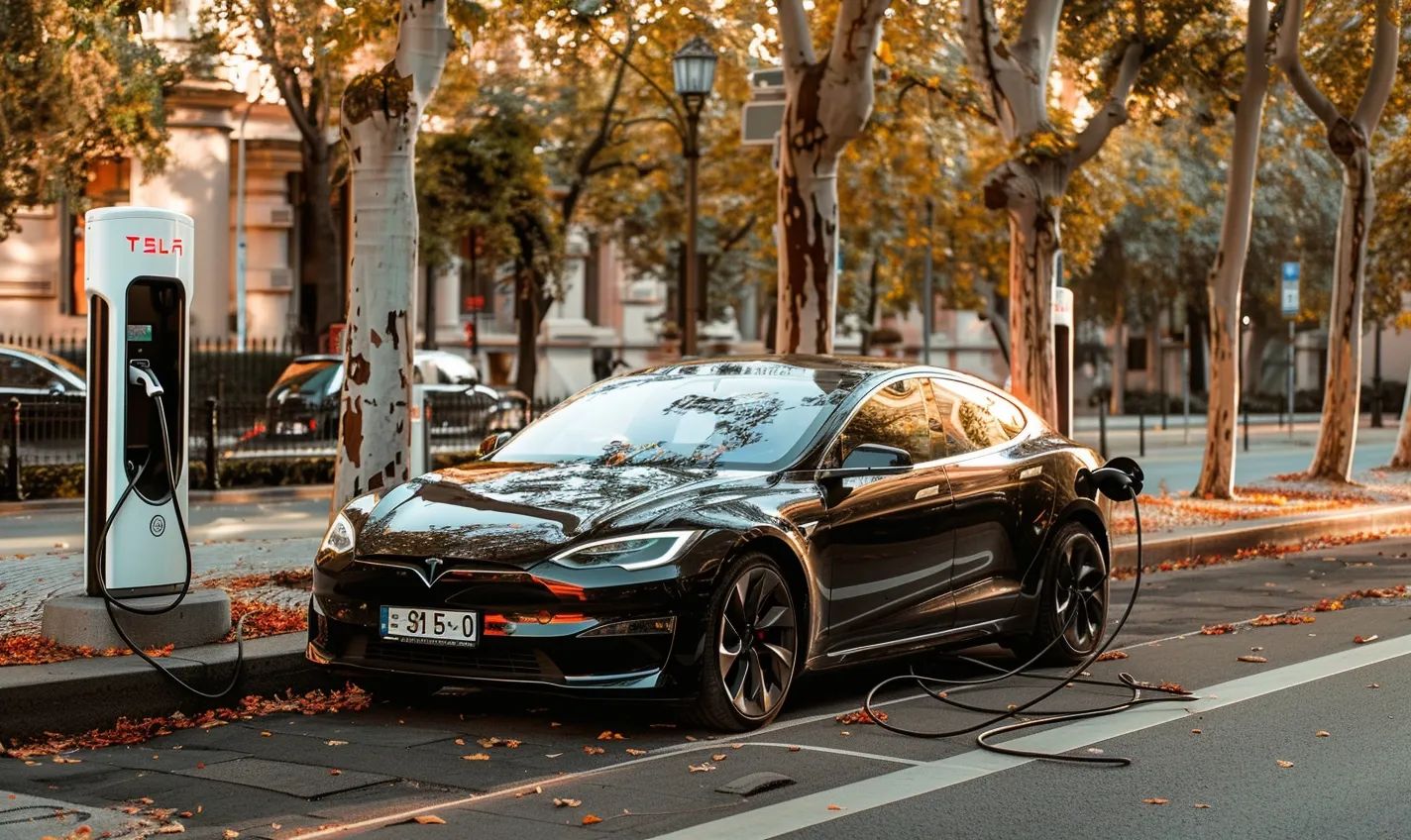
When and How to Use Regenerative Braking
Regenerative braking is a valuable feature in electric cars that allows the vehicle to recover and store energy while decelerating or coming to a stop. By capturing the kinetic energy generated during braking, this technology helps extend the driving range of electric cars and improve overall efficiency. However, using regenerative braking effectively requires some knowledge and understanding.
When to Use Regenerative Braking
You can take advantage of regenerative braking in various scenarios, including:
- When approaching a red traffic light or a stop sign
- Descending a hill or driving downhill
- Slowing down in heavy traffic
- Exiting a highway or off-ramp
- Coasting to a stop at a parking lot or charging station
In each of these situations, regenerative braking can convert the kinetic energy that would otherwise be dissipated as heat through conventional braking into electrical energy, which is then stored in the car’s battery pack for later use.
How to Use Regenerative Braking
To maximize the benefits of regenerative braking, follow these guidelines:
- Lift off the accelerator pedal earlier: By releasing the accelerator pedal before applying the brakes, you allow the vehicle to start regenerating energy in advance.
- Gradually increase the level of braking: Start by lightly applying the brake pedal to initiate regenerative braking. The system will automatically adjust the amount of regenerative braking based on your desired deceleration.
- Blend regenerative and conventional braking: The system may reach its limit when requiring more force. It’s essential to smoothly transition to traditional friction braking to ensure a safe and efficient stop.
Remember that regenerative braking effectiveness depends on factors such as the battery’s state of charge, the level of deceleration, and the overall driving conditions. Adjusting your driving style and anticipating situations where regenerative braking can be used will help you extract the maximum benefit from this technology.
So, the next time you hit the road in your electric car, remember to make the most of regenerative braking. Doing so will enhance your driving experience, extend your range, and contribute to a more sustainable future.

Common Mistakes to Avoid When Utilizing Regenerative Braking
Regenerative braking is a game-changer when driving and operating an electric car. It offers several advantages, such as increased energy efficiency, longer battery life, and reduced wear on traditional braking components. However, it’s essential to understand how to use regenerative braking effectively to maximize its benefits. Let’s explore six common mistakes to avoid when utilizing regenerative braking:
Over-relying on Regenerative Braking
While regenerative braking is an excellent way to recharge your electric car’s battery, it’s essential not to rely on it solely. Remember that regenerative braking works best at lower speeds when only moderate braking force is required. When immediate and intense braking is necessary, such as during emergencies, using the traditional brake pedal is crucial to ensure your safety.
Neglecting to Anticipate Traffic Conditions
One of the keys to effectively utilizing regenerative braking is anticipating traffic conditions ahead. By observing the road and maintaining a safe following distance, you can anticipate when to brake and adjust your driving accordingly. This proactive approach allows regenerative braking to capture more energy during deceleration, improving efficiency.
Inconsistent Acceleration and Braking
Consistency is vital when it comes to regenerative braking. Avoid aggressive or jerky acceleration and braking, as this can reduce its effectiveness. Opt for smooth and gradual acceleration and braking, allowing the regenerative braking system to optimize energy recovery. Maintaining a consistent driving style will unlock the full potential of regenerative braking.
Not Utilizing Coasting Opportunities
Coasting is an underrated yet effective technique to maximize regenerative braking. Whenever you see an opportunity to coast, such as when approaching a downhill section or a traffic light turning yellow ahead, release the accelerator pedal and allow the car to slow down naturally using regenerative braking. This technique helps recover energy that would otherwise be wasted and enhances overall efficiency.
Failing to Monitor Battery Levels
Monitoring your electric car’s battery levels is vital to avoid depleting it too much or overcharging it. Regenerative braking might become less effective when the battery is fully charged or almost empty. Monitor the battery level indicator and adjust your driving style accordingly, finding the sweet spot that optimizes regenerative braking efficiency.
Disregarding Weather Conditions
Weather conditions can significantly impact the effectiveness of regenerative braking. It’s important to drive cautiously and potentially turn off regenerative braking in slippery or icy conditions to ensure better vehicle control. The regenerative braking system can also be less efficient in extremely hot or cold temperatures. Adapt your driving style based on the weather conditions to maintain safety and efficiency.
Avoiding these common mistakes and adopting a mindful approach to utilizing regenerative braking will help you make the most of this innovative technology in your electric car. By optimizing regenerative braking efficiency, you can enjoy extended driving range, improved battery life, and a more sustainable driving experience.
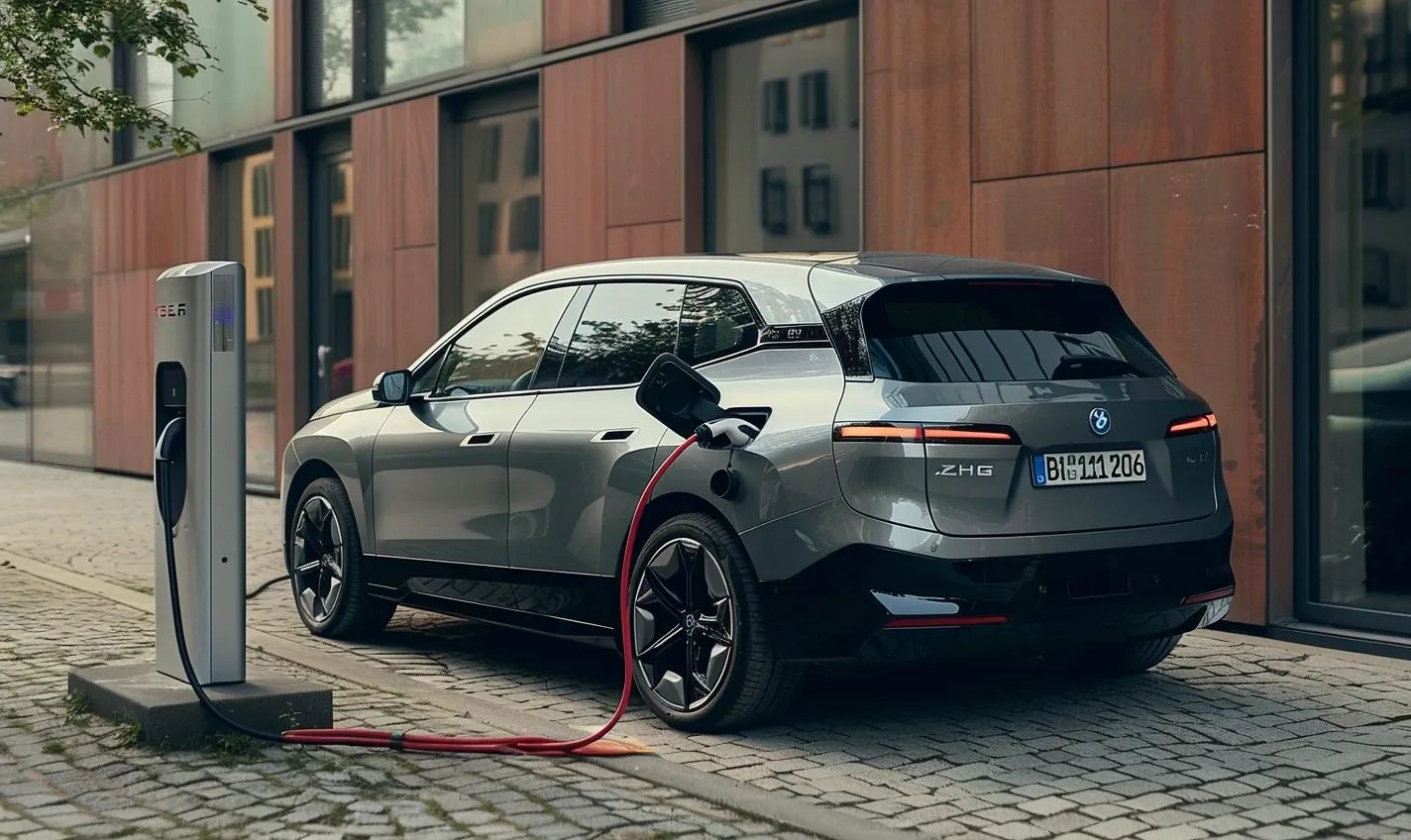
How Regenerative Braking Affects Range and Battery Life
Optimizing Efficiency for a Longer Range
When it comes to driving and operating an electric car, regenerative braking is one of the critical factors that can significantly impact its range and battery life. While regenerative braking is beneficial for various reasons, understanding how it affects range and battery life is crucial for maximizing the efficiency of your electric vehicle.
Regenerative braking allows electric cars to recover and convert some of the kinetic energy that would otherwise be lost during braking into electrical energy, which is then stored in the battery for later use. By harnessing this energy, the car reduces its reliance on the battery for power and increases its overall range.
To effectively use regenerative braking and optimize efficiency, consider the following tips:
1. Anticipate braking situations: By anticipating traffic conditions and planning your braking, you can avoid sudden stops and allow regenerative braking to work optimally. Smooth, gradual braking enables the system to capture as much energy as possible.
2. Adjust the regenerative braking settings: Some electric vehicles allow you to adjust the level of regenerative braking. Experiment with different settings to find the balance that works best for you. A higher regenerative braking setting may provide more energy recovery but could also impact the smoothness of the ride.
3. Take advantage of downhill routes: The regenerative braking system can be particularly effective when driving downhill. Utilize these routes to your advantage, allowing the system to capture significant amounts of energy and extend your vehicle’s range.
Preserving Battery Health
While regenerative braking has its benefits in terms of range, it’s essential to maintain a healthy battery for optimal performance and longevity. Here are some tips to help preserve your electric car’s battery life:
1. Avoid excessive regenerative braking: While regenerative braking is designed to improve efficiency, excessive use in certain situations, such as high-speed braking or slippery surfaces, can strain the battery. Use conventional braking when necessary to avoid unnecessary stress on the system.
2. Monitor battery temperature: Extreme temperatures can significantly impact battery life. Avoid exposing your electric car to excessive heat or cold, as it can degrade the battery’s performance over time. Additionally, park your car in shaded areas whenever possible to minimize temperature fluctuations.
3. Don’t let the battery fully deplete: Maintaining a certain charge level can prolong battery life. Avoid frequently letting the battery level drop to zero or completely depleting it before recharging. Consider recharging your electric vehicle when the battery level drops to around 20% to 30% for optimal battery health.
By effectively using regenerative braking and taking steps to preserve battery health, you can maximize the range of your electric car while ensuring the longevity of its battery. Understanding how regenerative braking affects range and battery life allows you to capitalize on this innovative technology and maximize your electric driving experience.
Regenerative Braking vs. Conventional Braking – Which is Better?
Regarding braking in an electric car, the traditional method of conventional braking may seem like the obvious choice. However, the game has changed with the advent of regenerative braking technology. Regenerative braking allows electric vehicles to recover and reuse energy that would otherwise be wasted during braking, providing numerous advantages over conventional braking systems.
The Benefits of Regenerative Braking
Regenerative braking offers several significant advantages that make it a superior choice compared to conventional braking:
- Efficiency: Regenerative braking allows electric vehicles to convert kinetic energy into electrical energy, which can be stored in the battery for later use. This process reduces the reliance on friction-based conventional braking, improving overall efficiency.
- Extended Range: By harnessing energy that would otherwise be lost, regenerative braking helps increase electric cars’ driving range. This can be especially beneficial in stop-and-go traffic or during downhill descents.
- Reduced Brake Pad Wear: Unlike conventional brakes, regenerative braking relies less on mechanical friction, reducing wear on brake pads. This translates into longer-lasting brake pads and lower maintenance costs.
- Smooth and Controlled Deceleration: Regenerative braking allows for more precise deceleration control, providing a smoother and more comfortable driving experience. This is especially evident when transitioning between acceleration and braking.
When Conventional Braking is Preferred
While regenerative braking offers numerous advantages, there are instances where conventional braking may still be necessary or preferred:
- Emergency Brake Situations: In sudden or emergency braking situations, conventional brakes are designed to provide maximum stopping power and should be utilized to ensure safety.
- Low Battery State of Charge: When the battery is low on charge, regenerative braking may be limited or disabled to prioritize recharging the battery through other means, such as external charging stations.
In these scenarios, conventional braking ensures optimal performance and safety while allowing the regenerative braking system to recharge the battery for later use. It’s important to note that even when conventional brakes are used, the regenerative braking system continues operating and assists in energy healing to some extent.
Overall, regenerative braking is the more efficient and sustainable choice for everyday driving conditions in electric cars. It not only conserves energy but also helps maximize the vehicle’s range. However, drivers must understand the limitations and utilize the appropriate braking method based on the situation.
So, the next time you hop in an electric car, make the most of regenerative braking, enjoy its benefits, and contribute to a more efficient and sustainable driving experience.
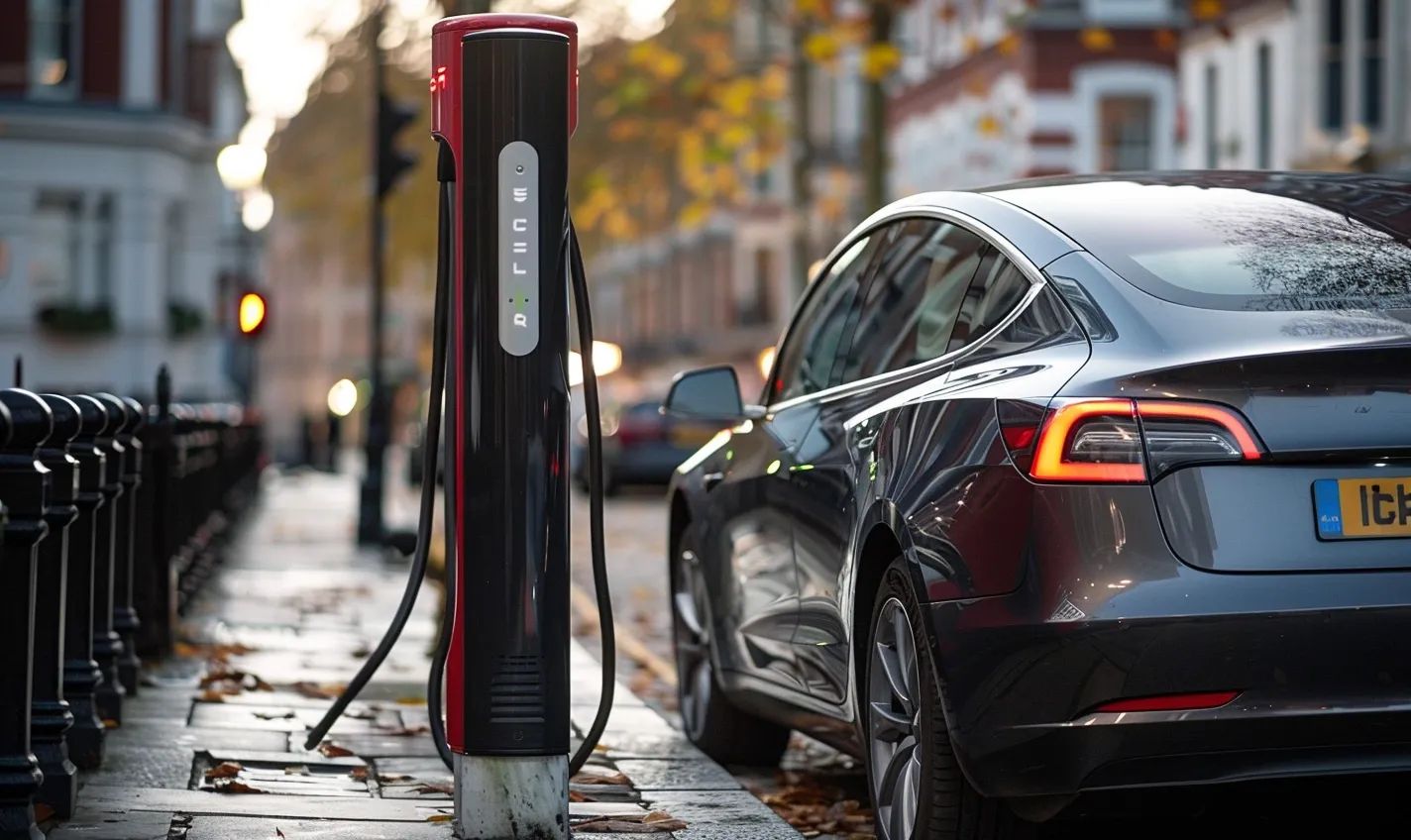
The Role of Regenerative Braking in Achieving a Sustainable Future
One of the most crucial aspects to consider when driving and operating an electric car is regenerative braking. This innovative technology plays a significant role in achieving a sustainable transportation future. Electric vehicles (EVs) can maximize energy efficiency, minimize environmental impact, and enhance the overall driving experience by harnessing the power of regenerative braking.
The Benefits of Regenerative Braking
Regenerative braking allows EVs to convert kinetic energy into electrical energy during deceleration. This energy is then stored in the battery and can be used to power the vehicle later. By using regenerative braking effectively, EV owners can enjoy several benefits:
- Increased Efficiency: Regenerative braking recaptures energy typically wasted as heat in traditional braking systems, making the most out of every mile.
- Extended Range: By converting braking energy into usable electricity, regenerative braking effectively increases the overall range of an electric vehicle.
- Reduced Wear on Brakes: Since regenerative braking relies on electric motors to slow the vehicle, it can significantly decrease the wear and tear on brake pads and other braking components, leading to longer maintenance intervals and reduced costs.
- Enhanced Driving Experience: Regenerative braking provides smoother and more controlled deceleration, reducing the need for frequent brake pedal use and making the driving experience more enjoyable.
Optimizing Regenerative Braking Efficiency
To make the most of regenerative braking, here are a few tips to optimize its efficiency:
- Anticipate Traffic Flow: By looking ahead and predicting when you’ll need to slow down or stop, you can make better use of regenerative braking.
- Maximize Deceleration Rate: A more aggressive deceleration can allow for increased energy recapture but ensure it suits traffic conditions and road safety.
- Utilize One-Pedal Driving: Some EVs offer a one-pedal driving mode that maximizes regenerative braking. This allows you to accelerate and decelerate using the accelerator pedal, activating regenerative braking as soon as you release pressure.
- Practice Efficient Coast-down: When approaching a red light or downhill stretch, release the accelerator early to allow regenerative braking to handle most deceleration.
In conclusion, regenerative braking is pivotal in achieving a sustainable transportation future. By harnessing this technology effectively, electric vehicles can improve energy efficiency, increase range, reduce brake wear, and enhance the overall driving experience. As EV manufacturers continue to innovate and refine regenerative braking systems, we can look forward to sustainable transportation becoming the norm.
How Automakers Are Innovating Regenerative Braking Technology
Regenerative braking technology has revolutionized how we think about braking in electric cars. As the demand for cleaner and more sustainable transportation grows, automakers continually strive to improve regenerative braking systems to enhance efficiency and maximize the range of electric vehicles. Here are some of the innovative advancements that automakers are incorporating into regenerative braking technology:
Improved Efficiency
Automakers are constantly refining regenerative braking systems to make them more efficient. By optimizing the algorithms and control systems, they can better capture and store the energy produced during braking, effectively converting it into usable electricity for the battery. These advancements increase the range of electric vehicles and reduce reliance on the traditional friction brake system.
Intelligent Energy Management
Automakers are incorporating intelligent energy management systems to enhance the effectiveness of regenerative braking further. These systems analyze factors such as speed, vehicle weight, road conditions, and driver behavior to determine when and how much regenerative braking force should be applied. By intelligently managing the energy flow, electric vehicles can recover more energy during deceleration and improve overall efficiency.
Integration with Other Technologies
Automakers are integrating regenerative braking technology with other advanced systems to harness more energy. For instance, some electric vehicles now utilize regenerative braking while descending hills or mountains, transforming potential energy into electrical energy. Additionally, regenerative braking can be combined with solar panels installed on the car’s roof, allowing for an additional renewable energy source.
User Interface Enhancements
Automakers are also improving the user interface of regenerative braking systems to promote more effective utilization. Clear and intuitive displays provide real-time feedback on the energy recovered during braking, encouraging drivers to adopt smoother driving behaviors that maximize the benefits of regenerative braking. This enhances the overall driving experience and educates drivers about their impact on the vehicle’s energy efficiency.
Adaptive Regenerative Braking
Some automakers implement adaptive regenerative braking systems that can learn and adapt to individual driver preferences and conditions. By continuously monitoring the driver’s habits, these systems can adjust the regenerative braking intensity to suit their preferences and driving style. This personalized approach to regenerative braking maximizes both efficiency and driver comfort.
As electric vehicles continue to gain popularity, automakers are investing in research and development to improve regenerative braking technology further. The benefits of regenerative braking, such as increased range, reduced energy consumption, and enhanced sustainability, will likely become even more pronounced through these innovations. With each advancement, we edge closer to a greener and more efficient future of transportation.
The Impact of Driving Behavior on Regenerative Braking Effectiveness
When it comes to driving an electric car, understanding the impact of your driving behavior on regenerative braking effectiveness is critical. You can extend your vehicle’s range and maximize its efficiency by harnessing the power of regenerative braking. Let’s explore how your driving habits can affect the effectiveness of regenerative braking.
Smooth and Consistent Driving
Smooth and consistent driving is essential for making the most of regenerative braking. By avoiding sudden acceleration, hard braking, and aggressive maneuvers, you can maintain a steady speed and allow the regenerative braking system to kick in smoothly. This ensures that the kinetic energy generated during braking is efficiently converted back into usable electricity for the battery.
Anticipate Traffic Flow
Anticipating traffic flow is a valuable skill to develop as an electric car driver. You can reduce unnecessary braking by looking ahead and predicting when to slow down or stop. This translates to a higher amount of energy being recovered through regenerative braking. Paying attention to traffic signals, road conditions, and the behavior of other drivers can help you optimize regenerative braking efficiency.
Use One-Pedal Driving
One-pedal driving is a technique that involves primarily using the accelerator pedal to control both acceleration and deceleration. By lifting off the accelerator early and allowing the regenerative braking system to slow down the vehicle, you can minimize the need for conventional braking. This allows for a higher degree of energy recapturing, contributing to the overall efficiency of your electric car.
Utilize Eco and B Mode
Eco and B mode are features commonly found in electric cars, designed to optimize energy consumption and regenerative braking. Eco mode adjusts the throttle response to reduce power output, while B mode increases regenerative braking when you lift off the accelerator. By engaging these modes, you can enhance the effectiveness of regenerative braking, especially in urban driving scenarios with frequent stop-and-go traffic.
By adopting these driving habits and techniques, you can significantly improve the effectiveness of regenerative braking in your electric car. Not only will this extend your vehicle’s range, but it also contributes to a more sustainable and eco-friendly driving experience. So, the next time you hit the road in your electric car, remember to drive smoothly, anticipate traffic flow, use one-pedal driving, and make the most of Eco and B modes to maximize the benefits of regenerative braking.
The Future of Regenerative Braking and its Potential Advancements
As electric vehicle technology continues to advance, so does the future of regenerative braking. Innovations in this area hold tremendous potential for improving electric cars’ overall efficiency, performance, and sustainability. Here are some exciting advancements that we can expect in the coming years:
Enhanced Regenerative Braking Systems
Automakers invest in research and development to create more efficient regenerative braking systems. New advancements may include improved sensors and algorithms that enable more precise control of the energy conversion process. These enhancements can lead to even more remarkable energy recovery and efficiency, ultimately extending the range of electric vehicles.
Intelligent Regenerative Braking
Future electric cars may incorporate artificial intelligence and machine learning to optimize regenerative braking. These systems can learn and adapt to the driver’s behavior, environmental conditions, and traffic patterns through extensive data analysis. The result would be a personalized regenerative braking experience that maximizes energy recovery while ensuring a smooth and comfortable ride.
Integrating Renewable Energy Sources
Integrating regenerative braking with other renewable energy sources, such as solar or wind power, holds immense potential. Electric vehicles with solar panels or regenerative capabilities harnessing wind energy could further reduce carbon emissions and dependence on traditional power grids. This integration would make electric cars an even cleaner and more sustainable mode of transportation.
Regenerative Braking for Non-Electric Vehicles
While regenerative braking is exclusive to electric vehicles, its application also has potential in non-electric cars. Researchers and engineers are exploring adapting regenerative braking technology to hybrid and conventional vehicles to maximize energy efficiency and reduce fuel consumption. This advancement would be an additional step towards a greener future.
With these advancements, regenerative braking technology will become an even more critical component of the electric vehicle ecosystem. The potential for energy recovery, enhanced efficiency, and reduced environmental impact is significant. As the demand for sustainable transportation continues to grow, regenerative braking is poised to contribute substantially to achieving a greener future.
Key Takeaways:
- The future of regenerative braking holds excellent promise for further enhancing the performance and efficiency of electric vehicles.
- Advancements such as improved systems, intelligent algorithms, renewable energy integration, and expansion to non-electric vehicles are expected.
- These advancements will contribute to a more sustainable and greener transportation ecosystem.
Conclusion
In conclusion, mastering regenerative braking in an electric car benefits energy efficiency and extends the vehicle’s range. Understanding how regenerative braking works and utilizing it effectively can significantly increase your overall driving experience.
Regenerative braking allows the electric car to convert kinetic energy into electrical energy, which is then stored in the battery. This process helps to recharge the battery and reduces wear and tear on the brake pads, resulting in longer-lasting brakes.
To make the most out of regenerative braking, it is essential to anticipate traffic conditions and adjust your driving style accordingly. By maintaining a safe distance and gradually coasting to a stop rather than abruptly braking, you can maximize the amount of energy that is recovered and stored in the battery.
Furthermore, familiarizing yourself with your electric car’s different regenerative braking modes, such as low or high regen settings, can improve driving efficiency. Experimenting with these modes and finding one that suits your driving style can help optimize energy regeneration during various driving conditions.
Effective regenerative braking can contribute to a more sustainable and cost-effective driving experience. By harnessing the power of regenerative braking, you can achieve longer driving ranges, save on energy costs, and reduce your carbon footprint. So, the next time you hit the road in your electric car, don’t forget to make the most of regenerative braking!
Frequently Asked Questions (FAQs)
How does regenerative braking work in an electric car?
Regenerative braking in an electric car uses the electric motor as a generator to convert the moving vehicle’s kinetic energy into electrical energy. This energy is then stored in the battery for later use, improving the vehicle’s overall efficiency.
What are the advantages of using regenerative braking?
Using regenerative braking in an electric car has several advantages. It helps to increase the range of the vehicle by capturing and storing energy that would otherwise be wasted as heat. It also reduces wear on the brake pads and increases lifespan, resulting in lower maintenance costs.
Can regenerative braking be turned off?
Yes, regenerative braking can be turned off in some electric cars. This is usually done through a specific driving mode or manually turning off the system. However, turning off regenerative braking is not recommended as it helps improve the overall efficiency and range of the vehicle.
Does regenerative braking work in all driving conditions?
Regenerative braking works best in stop-and-go traffic or driving downhill, allowing maximum energy recapture. However, it is less effective at higher speeds where mechanical brakes are needed to provide sufficient stopping power. Nevertheless, it still helps to recover some energy in most driving conditions.
Is there a limit to how much energy can be captured through regenerative braking?
Yes, there is a limit to how much energy can be captured through regenerative braking. The amount of energy that can be stored depends on the efficiency of the regenerative braking system and the capacity of the vehicle’s battery. Once the battery reaches its maximum capacity, any additional energy is wasted as heat.
Can regenerative braking replace traditional brakes?
Regenerative braking is not designed to replace traditional mechanical brakes entirely. While it can significantly reduce the wear on brake pads and increase their lifespan, traditional brakes are still necessary for emergencies and situations requiring more stopping power, such as high-speed braking or sudden stops.
